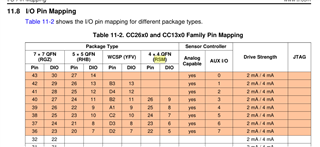工具与软件:
您好!
我正在使用 CC1310上的传感器控制器单元通过 I2C 总线读取温度传感器并将数据传递到主处理器。 一切都运行正常、直到我尝试使用 Semaphore_pend (enterDeepSleepHandle、BIOS_wait_forever)信号来将主处理器置于睡眠模式。 我将使用计时器以设定的间隔布置信标。
如果我尝试在不使用传感器控制器单元的情况下将主处理器置于睡眠模式、则一切都正常。 如果我使用传感器控制器单元、但不要尝试将主处理器置于睡眠状态、一切都运行正常。
如果有任何帮助、将不胜感激。



